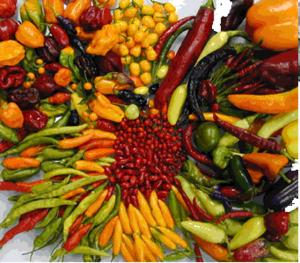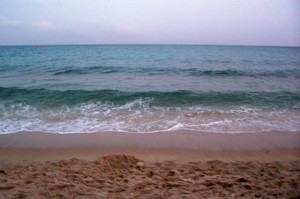What was Peter Piper thinking when he picked a peck of pickled peppers? Did he not know about New Mexico’s world famous Hatch Green Chiles? Apparently he was not a Chilehead who takes hotluck dishes to parties for the Chile Fix that gives you Chile Flashes. Well, I am a Chilehead and I thought I would share some fun stuff about chiles. For some great New Mexico green chile recipes, click here.
Is it Chili or is it Chile?
New Mexicans officially named their peppers “Chile” in the 1983 Congressional Record in order to differentiate their native specialty from the hamburger meal “Chili.” After all, New Mexico is the Chile Capitol of the United States, and to honor the efforts of the chile growers in the Hatch Valley, Senator Pete Dominici stood before the entire United States Senate and stated unequivocally that the dictionary spelling of the pod word was WRONG! Hatch is a village located about 30 miles northwest of Las Cruces and cultivates over 30,000 acres of the green chile pods each year.
Is it Hot or is it Not?
Chile heat levels are the results of two factors: genetics and environment. This is what makes the Hatch Valley one of the best areas for producing the tastiest green chile in the world. People often ask me what makes the Hatch chiles so much better than the rest. Hatch, New Mexico has the ultimate combination of perfect water levels, drainage, temperature levels, sunlight levels, and soil nutrients to grow green chiles. Plant breeders can often use genetics to produce a mildly hot pepper or a super hot pepper.
People ask me all the time in the grocery store – why am I smelling the peppers? After eating chiles my whole life, I can tell how hot the chile will be by smelling it. If you hold a chile close to your nose, usually, the stronger the smell, the hotter it will be. If it is really hot, it may give your nose, eyes, and fingers a little burning feeling. The painful way to determine the heat level of a chile is to taste the pod, but you can’t do that in the store. There are other laboratory methods used to determine heat levels of a pod, but who cares?
Capsaisin is what makes chile hot and is located around the stem, in the membranes and in the seeds. It you want to lessen the heat level of the chile before you use it in a recipe, remove the seeds and membranes from the pod. The hottest of peppers is the orange habanero, followed by the red habanero. Some people may be surprised to know that there are about 12 peppers hotter than the jalapeno. Dairy products like milk or yogurt are the best chile painkillers to use. Drowning your mouth with water will not take away the heat of a chile. Use gloves when roasting, peeling, and packing your chiles.
How to Roast a Peck of Peppers
Each year, I purchase 150 pounds of the world’s most famous New Mexico green chile and have them delivered to where ever I am living. I roast them and freeze them for use all year long on everything I eat. I use poblano, habanero, jalapeno, Serrano, Tabasco, and cayenne peppers. I have learned over the years how to perfectly roast a Hatch Green Chile so the skin peels right off:
Place the chiles on a cookie sheet
Set your oven on Broil and use the center rack
Broil fast until chiles turn brown on top – then turn them over to brown other side
When brown and skins start to swell, take them out and immediately put them in a baggie
Let the hot roasted peppers sweat in the sealed plastic baggie for 30 minutes
Put them right into the freezer or refrigerator until ready to use
Peel the peppers before cooking; skins should come right off after sweating in plastic
The Chile Pepper Institute
The Chile Pepper Institute is located at the New Mexico State University in Las Cruces, New Mexico. You may laugh, but Paul Bosland, Horticulture Professor at The Institute is considered one of the leading chile pepper breeders in the world. They provide all kinds of useful information about chiles:
* Chiles have one of the highest nutritional values of any ingredient. Chiles are loaded with B vitamins, Calcium, Iron, Potassium, Vitamin C, and Vitamin A.
Contrary to myth, there are no varieties of chiles that are poisonous, including the ornamental varieties.
* Chiles are believed to have originated in Brazil and Bolivia and found their way to the southwest by birds and natives. In 1888, a New Mexico horticulturist experimented with breeding by planting some seeds near Anaheim, New Mexico. The plants did well and in 1987, the Anaheim chile became a variety in the New Mexico pod type category.
Festivals for Chileheads
New Mexico Wine and Chile Festival – Memorial Day weekend
Hatch Chile Festival – Labor Day weekend in Hatch
Whole Enchilada Fiesta – first weekend in October in Las Cruces
The Chile Pepper Institute – Chile teaching and gardening – open daily
Mucho bueno comida! (or – Happy Eating!)


